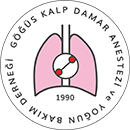

Vasoplegia After Cardiopulmonary Bypass: Current Approaches
Elvin KesimciDepartment of Anesthesiology and Reanimation, Başkent University Faculty of Medicine, Ankara, TürkiyeVasoplegia is a kind of distributive form of circulatory shock. It is commonly observed intraoperatively during cardiopulmonary bypass (CPB), after weaning from CPB or in the first postoperative 24 h follow-up in the intensive care unit (ICU). As CPB is still a cornerstone in surgical management of cardiovascular diseases, the incidence of vasoplegia increases up to 40% in cardiac surgical patients. The recognized characteristics are reduced blood pressure with profound peripheral vasodilation despite a preserved cardiac output. The pathophysiology is complex and mainly triggered by the systemic inflammatory response caused by CPB and surgical trauma. Early identification and prompt management of vasoplegia is crucial to prevent development of organ failure and longer hospital and ICU stay with increased morbidity and mortality. In this review, the risk factors, pathophysiology and current management approaches of vasoplegia after CPB are discussed.
Keywords: Cardiopulmonary bypass, management, pathophysiology, vasoplegia.Manuscript Language: English
(1524 downloaded)

















